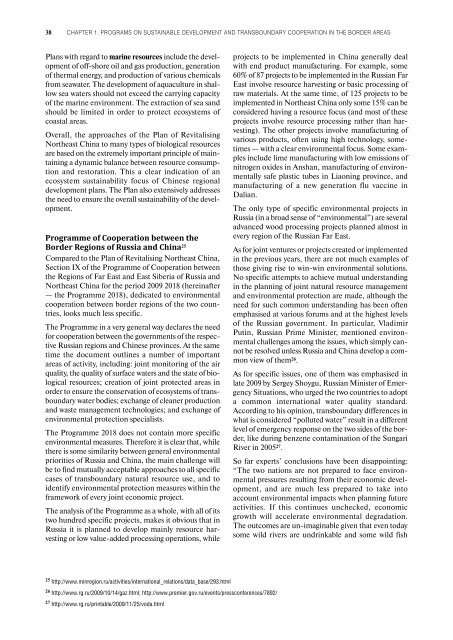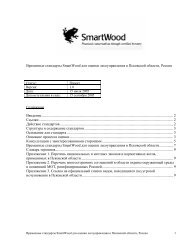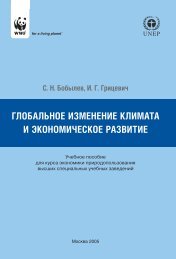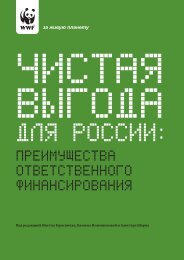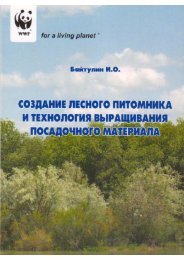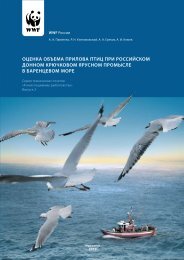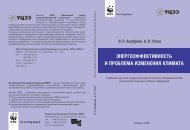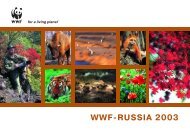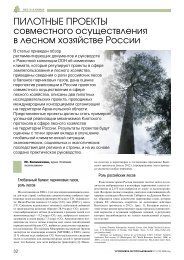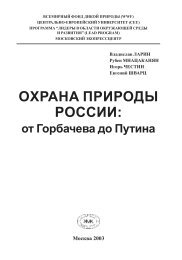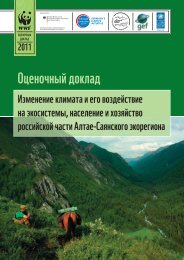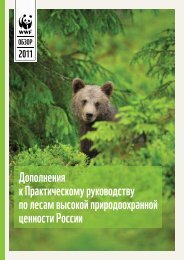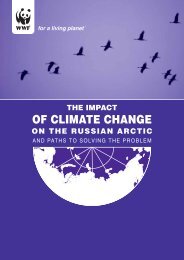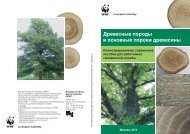to sino- russian
to sino- russian
to sino- russian
Create successful ePaper yourself
Turn your PDF publications into a flip-book with our unique Google optimized e-Paper software.
38 CHAPTER 1. PROGRAMS ON SUSTAINABLE DEVELOPMENT AND TRANSBOUNDARY COOPERATION IN THE BORDER AREAS<br />
Plans with regard <strong>to</strong> marine resources include the development<br />
of off-shore oil and gas production, generation<br />
of thermal energy, and production of various chemicals<br />
from seawater. The development of aquaculture in shallow<br />
sea waters should not exceed the carrying capacity<br />
of the marine environment. The extraction of sea sand<br />
should be limited in order <strong>to</strong> protect ecosystems of<br />
coastal areas.<br />
Overall, the approaches of the Plan of Revitalising<br />
Northeast China <strong>to</strong> many types of biological resources<br />
are based on the extremely important principle of maintaining<br />
a dynamic balance between resource consumption<br />
and res<strong>to</strong>ration. This a clear indication of an<br />
ecosystem sustainability focus of Chinese regional<br />
development plans. The Plan also extensively addresses<br />
the need <strong>to</strong> ensure the overall sustainability of the development.<br />
Programme of Cooperation between the<br />
Border Regions of Russia and China25 Compared <strong>to</strong> the Plan of Revitalising Northeast China,<br />
Section IХ of the Programme of Cooperation between<br />
the Regions of Far East and East Siberia of Russia and<br />
Northeast China for the period 2009 2018 (hereinafter<br />
— the Programme 2018), dedicated <strong>to</strong> environmental<br />
cooperation between border regions of the two countries,<br />
looks much less specific.<br />
The Programme in a very general way declares the need<br />
for cooperation between the governments of the respective<br />
Russian regions and Chinese provinces. At the same<br />
time the document outlines a number of important<br />
areas of activity, including: joint moni<strong>to</strong>ring of the air<br />
quality, the quality of surface waters and the state of biological<br />
resources; creation of joint protected areas in<br />
order <strong>to</strong> ensure the conservation of ecosystems of transboundary<br />
water bodies; exchange of cleaner production<br />
and waste management technologies; and exchange of<br />
environmental protection specialists.<br />
The Programme 2018 does not contain more specific<br />
environmental measures. Therefore it is clear that, while<br />
there is some similarity between general environmental<br />
priorities of Russia and China, the main challenge will<br />
be <strong>to</strong> find mutually acceptable approaches <strong>to</strong> all specific<br />
cases of transboundary natural resource use, and <strong>to</strong><br />
identify environmental protection measures within the<br />
framework of every joint economic project.<br />
The analysis of the Programme as a whole, with all of its<br />
two hundred specific projects, makes it obvious that in<br />
Russia it is planned <strong>to</strong> develop mainly resource harvesting<br />
or low value-added processing operations, while<br />
25 http://www.minregion.ru/activities/international_relations/data_base/293.html<br />
26 http://www.rg.ru/2009/10/14/gaz.html; http://www.premier.gov.ru/events/pressconferences/7892/<br />
27 http://www.rg.ru/printable/2009/11/25/voda.html<br />
projects <strong>to</strong> be implemented in China generally deal<br />
with end product manufacturing. For example, some<br />
60% of 87 projects <strong>to</strong> be implemented in the Russian Far<br />
East involve resource harvesting or basic processing of<br />
raw materials. At the same time, of 125 projects <strong>to</strong> be<br />
implemented in Northeast China only some 15% can be<br />
considered having a resource focus (and most of these<br />
projects involve resource processing rather than harvesting).<br />
The other projects involve manufacturing of<br />
various products, often using high technology, sometimes<br />
— with a clear environmental focus. Some examples<br />
include lime manufacturing with low emissions of<br />
nitrogen oxides in Anshan, manufacturing of environmentally<br />
safe plastic tubes in Liaoning province, and<br />
manufacturing of a new generation flu vaccine in<br />
Dalian.<br />
The only type of specific environmental projects in<br />
Russia (in a broad sense of “environmental”) are several<br />
advanced wood processing projects planned almost in<br />
every region of the Russian Far East.<br />
As for joint ventures or projects created or implemented<br />
in the previous years, there are not much examples of<br />
those giving rise <strong>to</strong> win-win environmental solutions.<br />
No specific attempts <strong>to</strong> achieve mutual understanding<br />
in the planning of joint natural resource management<br />
and environmental protection are made, although the<br />
need for such common understanding has been often<br />
emphasised at various forums and at the highest levels<br />
of the Russian government. In particular, Vladimir<br />
Putin, Russian Prime Minister, mentioned environmental<br />
challenges among the issues, which simply cannot<br />
be resolved unless Russia and China develop a common<br />
view of them 26 .<br />
As for specific issues, one of them was emphasised in<br />
late 2009 by Sergey Shoygu, Russian Minister of Emergency<br />
Situations, who urged the two countries <strong>to</strong> adopt<br />
a common international water quality standard.<br />
According <strong>to</strong> his opinion, transboundary differences in<br />
what is considered “polluted water” result in a different<br />
level of emergency response on the two sides of the border,<br />
like during benzene contamination of the Sungari<br />
River in 2005 27 .<br />
So far experts’ conclusions have been disappointing:<br />
“The two nations are not prepared <strong>to</strong> face environmental<br />
pressures resulting from their economic development,<br />
and are much less prepared <strong>to</strong> take in<strong>to</strong><br />
account environmental impacts when planning future<br />
activities. If this continues unchecked, economic<br />
growth will accelerate environmental degradation.<br />
The outcomes are un-imaginable given that even <strong>to</strong>day<br />
some wild rivers are undrinkable and some wild fish


